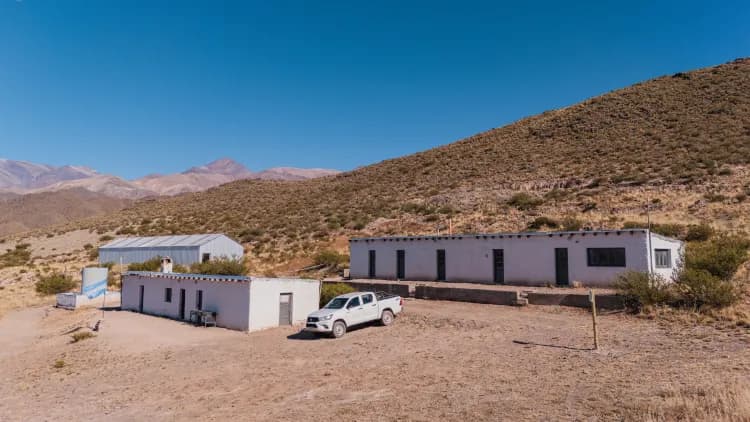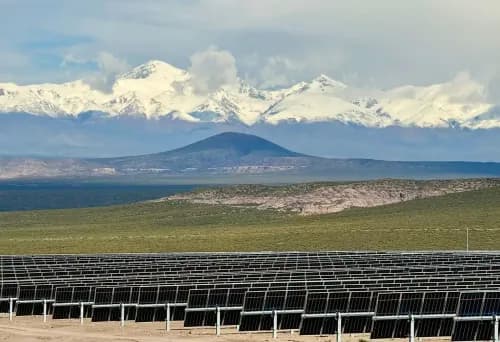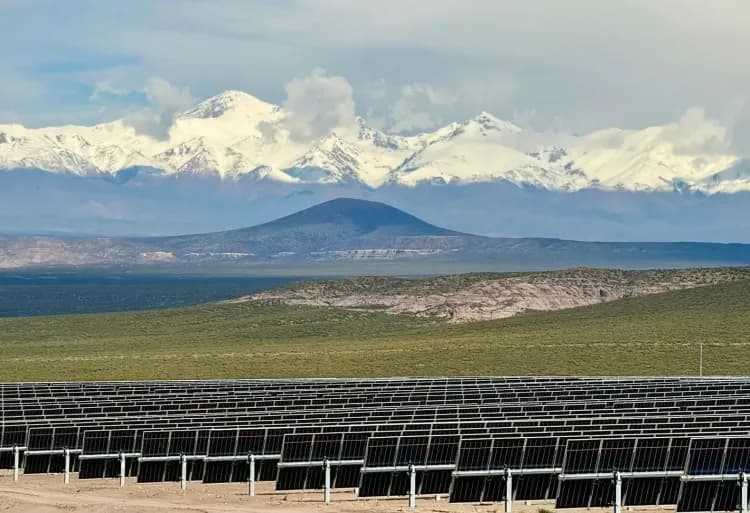With the public hearing already scheduled, PSJ Cobre Mendocino is accelerating its process toward obtaining the Environmental Impact Statement. With a $559 million investment and thousands of jobs at stake, Mendoza is hopeful about a mining revival.
By Panorama Minero
PSJ Cobre Mendocino, the copper project located 35 km from the town of Uspallata in the province of Mendoza, is approaching a decisive moment in its environmental evaluation process following the call for a public hearing. This event not only represents a key opportunity for public participation and social scrutiny, but also signals progress for a project that could become the first to produce red metal in Argentina since the closure of Bajo de la Alumbrera.
Moreover, under current legislation in Mendoza, this stage serves as the prelude to the technical resolution of the Environmental Impact Report submitted in January and the potential granting of the Environmental Impact Statement (DIA). However, it does not mark the end of the administrative process, since in Mendoza the DIA must also receive political approval from both chambers of the provincial legislature.
Public Hearing: A Decisive Milestone
The date is already marked on the calendar: on Saturday, August 2, starting at 10 a.m., the public hearing for the Environmental Impact Report (EIR) of PSJ Cobre Mendocino will take place. The in-person event will be held at the Yalguaraz Ranch site, at the foot of Mount San Jorge, where the copper-bearing ore expected to be processed is located.
To date, more than 700 people have registered, suggesting a lengthy process that could extend over several days. The hearing will be conducted both in-person and virtually, with transportation provided from downtown Uspallata for those attending in person. This meeting represents the opportunity established by law for public participation, where the project's technical and environmental details will be presented, and all interested parties will be allowed to take part.
A Project with Over 60 Years of History Aims to Become Reality
PSJ Cobre Mendocino, a project whose origins date back to its discovery in the 1960s, has been revitalized under the leadership of Zonda Metals (Switzerland) and Grupo Alberdi (Argentina), who presented the current design in January of this year. This updated Environmental Impact Report (EIR) is a key document that incorporates technical advancements to ensure an efficient operation aligned with current environmental standards.
February 12 marked the official start of the Environmental Impact Assessment process through Resolution 51 from the Mining Directorate. Later, on February 28, the Interdisciplinary Mining Environmental Evaluation Commission (CEIAM) held its first meeting, under the direction of Mendoza’s Ministry of Environment — a key body in the technical and ongoing analysis of the project. This was followed by a report from the National University of Cuyo and subsequently by opinions from various sectoral agencies, all of which were addressed and integrated by PSJ. After the public hearing, the final report will be issued, and the potential approval of the project’s Environmental Impact Statement (DIA) will be awaited.
The Mendoza government estimates that the project should be brought before the Legislative Branch before the end of the year. There, the DIA file will require a simple majority vote in both chambers. Only then will the company be authorized to begin the path toward construction. PSJ has indicated that, once the DIA is approved, they will immediately begin the feasibility phase, which includes detailed engineering, at an estimated cost of US$15 million. This phase is expected to take several months before construction can officially begin. Once construction starts, it will take between 18 and 24 months before ore processing can begin — potentially making this the first copper-producing mine in the country after a seven-year hiatus in red metal production.
Transparency and Openness: Guided Tours to Dispel Myths
Throughout the entire environmental evaluation process, PSJ has emphasized its commitment to transparency and community engagement. A key pillar of this approach has been the ongoing guided tours of the project area in Uspallata. This initiative has allowed local residents, media outlets, various organizations, and technical bodies to directly access the facilities and gain firsthand insight into the operations, as well as the environmental and safety measures in place.
By consistently opening its doors, PSJ aims to demystify aspects of mining activity and build trust through direct observation and interaction.
A Training Program Sends a Message: Local Pragmatism in the Face of Opposition
This shift is evident, for example, in the enthusiastic response to a free diamond drilling course in Uspallata — revealing a key social trend: the local community is choosing pragmatism regarding mining activity. Despite often vocal opposition, a significant portion of residents is actively seeking job and training opportunities related to the industry. The response was overwhelming: 148 people registered in less than three hours for just 40 available spots — a demand that exceeded capacity by 370%. This eagerness to gain skills not only underscores a clear economic need in Uspallata but also reflects a community ready to seize every opportunity.
This phenomenon goes beyond training alone and, for the company, represents the early stages of building a social license for mining from the ground up. By offering technical education and direct employment to local residents, PSJ — which organized the course alongside Conosur — aims to forge a tangible connection with the community. This is no small matter, especially considering the findings of the social survey included in the mine’s Environmental Impact Report, which show that the local labor market is dominated by public sector jobs (70%). In contrast, private employment is often precarious and temporary, particularly lacking solid opportunities for young people. Local wages are generally viewed as insufficient, a problem worsened during winter due to high heating costs.
Uspallata’s community is composed of approximately 30% military families with temporary residence of 2 to 4 years, 40% long-term local residents born and raised in the area, and the remaining 30% made up of settlers and tourism investors, many from Buenos Aires and Córdoba. The total population is around 7,000 people, with 67.5% concentrated in the town’s urban core.

Argentina’s First Copper Mine: Investment, Jobs, and Production Outlook
The project envisions a capital expenditure (CAPEX) of US$559 million and an annual operational expenditure (OPEX) of US$120 million over a projected 16-year production period. The company estimates that approximately 3,900 jobs (direct and indirect) will be created during the 18 to 24 months of construction. Once operational, the project is expected to generate around 2,400 jobs — 800 direct and 1,600 indirect.
While the initial production phase is projected to last 16 years, the mine’s life could be extended to up to 27 years through additional drilling. During the initial period, average annual production is estimated at 40,000 tonnes of fine copper — a substantial volume that would place the province on the map of global production of this critical metal for the energy transition.
The processing plant, designed to handle 10 million tonnes of ore annually, is expected to produce an average of 151,000 tonnes of copper concentrate per year, with potential peaks reaching up to 241,000 tonnes. This concentrate, with a copper purity of 25%, will be the final product — highlighting the efficiency and scale of the proposed operation. The deposit’s design, with near-surface and disseminated mineralization, enables open-pit mining, optimizing extraction processes.
The extracted ore will pass through a circuit of crushing, grinding, flotation, thickening, and filtering to produce the concentrate. Laboratory tests have already yielded promising results, with copper recovery rates of 90% and gold recovery of 74% in the primary deposit — underlining the project’s technical and economic viability.


























